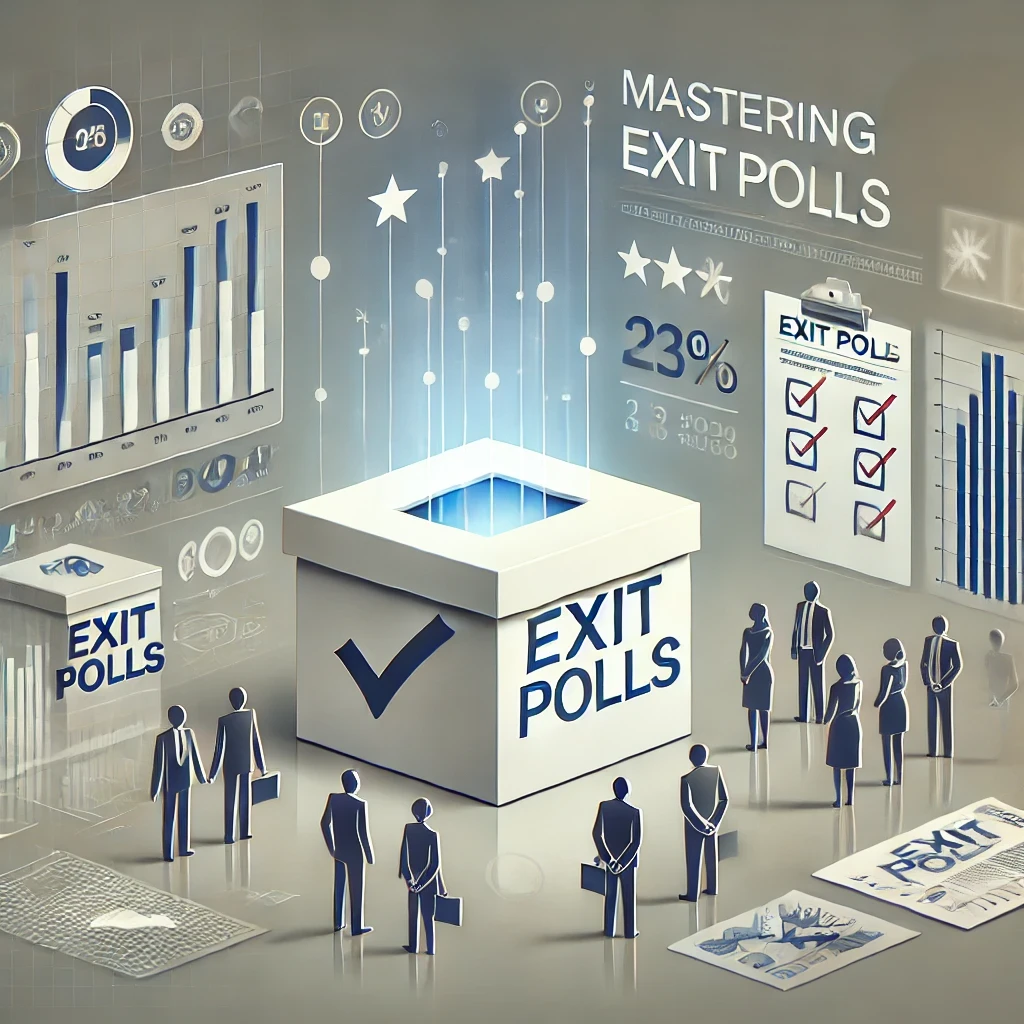Conducting an election survey involves several steps, each requiring careful planning, execution, and analysis to ensure accurate and reliable results. Here are the best practices and methodologies elaborated in detail:
1. Defining Objectives
a. Clarify Purpose: Understand the purpose of the survey. Is it to predict election outcomes, understand voter preferences, gauge issues of importance, or assess candidate popularity?
b. Target Audience: Define the demographic, geographic, and psychographic characteristics of the population to be surveyed.
2. Designing the Survey
a. Survey Questions:
- Types of Questions: Include a mix of closed-ended (multiple choice, yes/no) and open-ended questions to gather quantitative and qualitative data.
- Question Clarity: Ensure questions are clear, unbiased, and straightforward to avoid misinterpretation.
- Pre-testing: Conduct a pilot survey to identify and rectify any issues in question design.
b. Sampling Methodology:
- Sample Size: Determine an appropriate sample size to ensure representativeness and statistical significance. For example, a sample size of 5000 for an Assembly constituency can provide a good balance of accuracy and cost.
- Sampling Technique: Use random sampling, stratified sampling, or cluster sampling depending on the population characteristics and survey objectives.
3. Data Collection Methods
a. Modes of Data Collection:
- Face-to-Face Interviews: Effective for in-depth responses but time-consuming and expensive.
- Telephone Surveys: Quicker and less expensive but may have lower response rates.
- Online Surveys: Cost-effective and quick but may not reach older or less tech-savvy populations.
- Mail Surveys: Useful in specific contexts but generally have low response rates.
b. Training Surveyors: Ensure surveyors are well-trained in asking questions, recording responses accurately, and handling respondents ethically.
4. Field Operations
a. Field Management:
- Supervision: Field supervisors should monitor surveyors to maintain quality and consistency.
- Logistics: Plan and manage the logistics of reaching different areas, especially in rural or remote locations.
b. Data Quality Checks: Implement checks to ensure data integrity, such as back-checks and cross-verification of a sample of completed surveys.
5. Data Analysis
a. Data Cleaning: Identify and correct any errors or inconsistencies in the collected data.
b. Statistical Analysis:
- Descriptive Statistics: Summarize data using measures such as mean, median, mode, and standard deviation.
- Inferential Statistics: Use techniques like regression analysis, hypothesis testing, and chi-square tests to infer trends and relationships.
c. Weighting Data: Apply weights to adjust for sample demographics to match the population characteristics, ensuring the results are representative.
6. Interpreting Results
a. Cross-tabulation: Analyze results by different demographic groups (age, gender, location) to identify patterns and trends.
b. Trend Analysis: Compare results with previous surveys to identify changes over time.
c. Predictive Modelling: Use statistical models to predict election outcomes based on survey data, historical data, and other relevant factors.
7. Reporting and Presentation
a. Visual Presentation: Use charts, graphs, and tables to present data clearly and effectively.
b. Executive Summary: Provide a concise summary of key findings, insights, and recommendations.
c. Detailed Report: Include comprehensive details of the methodology, data analysis, and interpretations to provide transparency and credibility.
8. Ethical Considerations
a. Informed Consent: Ensure respondents are fully informed about the purpose of the survey and how their data will be used.
b. Anonymity and Confidentiality: Protect respondents’ identities and ensure their responses are kept confidential.
c. Neutrality: Maintain neutrality and avoid any bias in the survey design, data collection, and analysis.
9. Post-Survey Evaluation
a. Feedback: Collect feedback from surveyors and respondents to identify areas for improvement.
b. Review: Conduct a thorough review of the survey process to learn from any mistakes and enhance future surveys.
By following these best practices and methodologies, you can conduct an election survey that provides accurate, reliable, and actionable insights into voter behavior and preferences.

Kalyan Chandra
Kalyan chandra is a political strategist, media and communication consultant with the expertise in public relations, marketing, political research, election campaign management, psephology and digital analytics. He focuses on strategic political consulting, offering services that include competitive research, public opinion collection, and digital media management. Kalyan has significantly contributed to successful campaigns across India with his meticulous approach and deep understanding of the political landscape.

